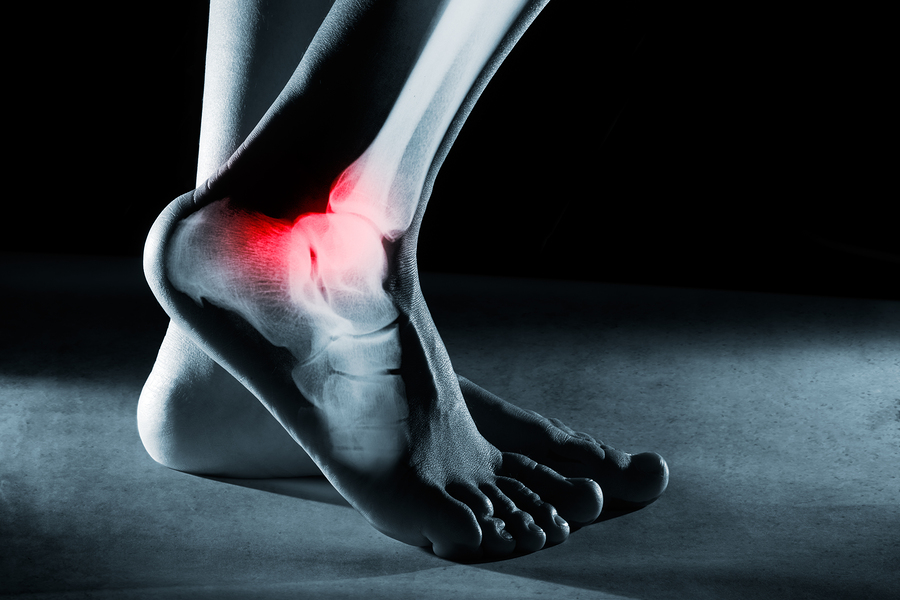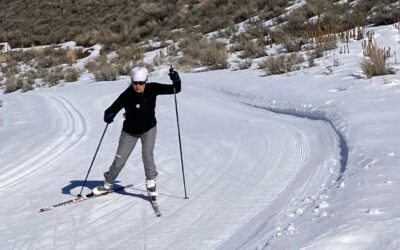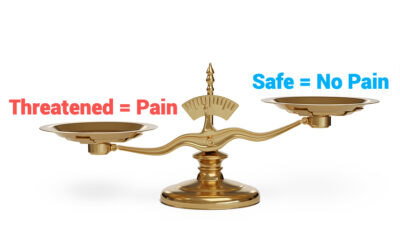Have you ever sprained your ankle?
It is a common injury, happening 97 times a minute, 2,328 times a day and 850,000 times a year. Actually, you have a 30% chance of spraining your ankle this year! (https://www.rightdiagnosis.com/a/ankle_sprain/stats.htm)
Although ankle sprains are the most common ankle injury, there are numerous other painful conditions of the foot and ankle. Just some examples of the issues you can have are plantar fasciitis, bone spurs, Achilles tendinitis, neuromas, bunions, hammer toe, and more. In fact, I recall having my ankle tapped for months because of a hairline fracture in my heel. Thus, there are multiple issues one can have in this area of the body.
Regardless of the injury, though, what is consistent in each of these circumstances is pain. And, as you know, pain alters how we distribute weight throughout our body and feet. This incorrect weight distribution often leads to compensations in posture and movement, like how we walk and run. And unfortunately, with time and repetition, these patterns become ingrained and cause pain in other joints and areas of the body.
Here’s an example: if you have pain in your right foot or ankle, you might shift your weight away from the injured area. First, the body might attempt to reduce the downward pressure on the injured foot or ankle by raising the right-sided joints (hip and shoulder). And actually, I have seen this many times with my clients! When I do, I note that their body is trying to flee the pain by elevating the joints on that same side of the body. While in this position, the function of these joints is compromised, which causes increased stress and strain.
Since you’re having pain in your right foot or ankle, you might shift your weight to the left side to avoid the hurt. This could happen in combination with the elevations just described, or it could happen independently. Of course, moving your weight to the left requires shifting your torso to the left. When this shifting happens, it is often accompanied by a lateral flexing of the spine in order to orient the body to that side. Additionally, the spine might rotate in that direction. This causes the right shoulder and hip to shift in front of the left side in order to help redistribute the weight to the left. You can see how imbalanced this is!
As a result of this imbalance, the left side, not accustomed or designed to hold more of your weight, has to figure out a way to take on this extra load. One defense could be to turn the left foot out. This will create a larger base of support and more stability on this side. However, when doing this, the whole left leg—from the hip to the ankle—turns out (external rotation). Then, as the leg externally rotates, the pelvis responds by tilting more forward (anterior tilt). This, in turn, impacts hip position and the entire leg below, including the load-bearing joints (the knee and ankle). Not good at all!
It’s evident that we move the lower body from the hip and pelvis. However, when they’re stuck in an externally rotated position, the muscles and tissues around them are no longer in a strong, aligned position. Consequently, walking and running are compensated because the muscles that are needed to propel you forward are no longer in an optimal position to function. This clearly causes an imbalance.
Another strategy the body employs to hold the additional weight is to widen the legs to greater than hip width apart. When this happens, the bones of your hips and pelvis are no longer taking the full weight of gravity through them. The surrounding soft tissues are forced to take on more of this load. You can guess what the result is! These tissues are being overworked—which then causes pain in your back, neck, hip, sacroiliac joint, and other areas.
One ankle sprain can lead to this or a similar cascade of changes in your body.
And it happens unconsciously!
Generally, we are not aware that the body has made these small modifications to ease our discomfort. Since we do not realize these alterations have been made in our position and movements, once the pain is gone, we maintain the same posture and patterns—for years!
Then, a decade or two later, we begin having chronic pain in our [insert body part here!] that doesn’t seem linked to anything we did recently. Because it isn’t! This pain is the result of those postural discrepancies and flawed movement patterns that were established when we hurt our foot or ankle—many years ago—that we unknowingly continued to the present day. Thus, old injuries caused imbalance, which causes poor movement patterns, which result in more imbalance and pain. The cycle repeats.
When an injury is rehabbed, it is often just until the pain subsides, not until balanced function is regained. Consequently, because of foot and ankle injuries earlier in life, many of us have a compensated walking gait. This flawed movement pattern reinforces our unbalanced posture. And sadly, it causes us to be stuck in pain.
However, this can change. Whether you suffered a foot or ankle injury last week, last year, or 25 years ago, it is never too late to finish your rehab and retrain your body to walk efficiently. How? By changing your gait mechanics! You can unwind some of your compensations from the ground up. To begin, try the following exercises:
Re-establish Proper Walking Mechanics
- To start, lift your foot using the muscles on the front of your leg (hip flexors) to create enough space to clear the floor.

- Now, heel strike! When you do this, be sure you feel your heel hit the ground first.
- Next, roll through your foot and over all your toes. When this happens, you should feel the big toe in contact with the ground as you push off and move forward.
- Meanwhile, relax your upper body. Relax your shoulders down and back.
- Don’t forget to swing your arms naturally with each step.
- Finally, free your torso to move and counter-rotate. As your arm swings forward, your rib cage rotates in that direction while the pelvis rotates in the opposite direction. Find more information and pictures of counter-rotation in my blog: Improve Your Running Form: Align Your Core.
Don’t let past ankle and foot problems keep you in pain. Take action today! Want to talk about your situation? Contact me for a free consultation.
_________________________________________________________
A big “Thank You!” to Dr. Michael Rothman, who shared these gait instructions that he uses with his patients. A retired Orthopedic surgeon and advanced posture therapist, Dr. Rothman actively works with clients using the Egoscue Method© in his new office in Albuquerque, NM. To find out more, contact him at 505-988-9783 or rothman.mike@gmail.com.



